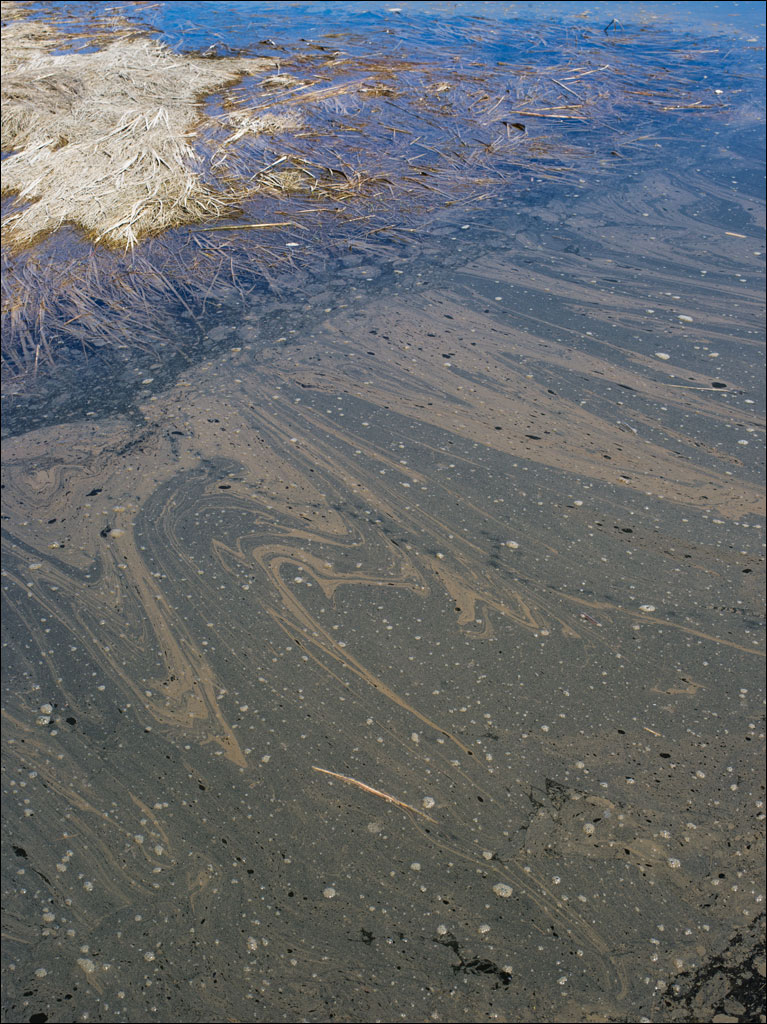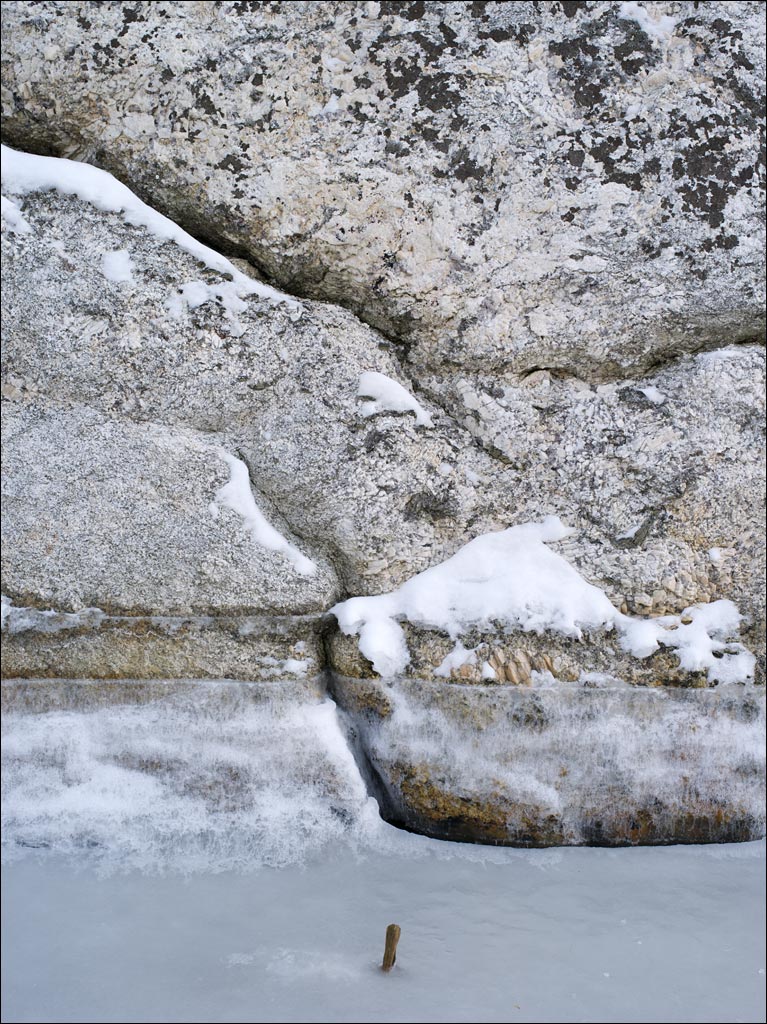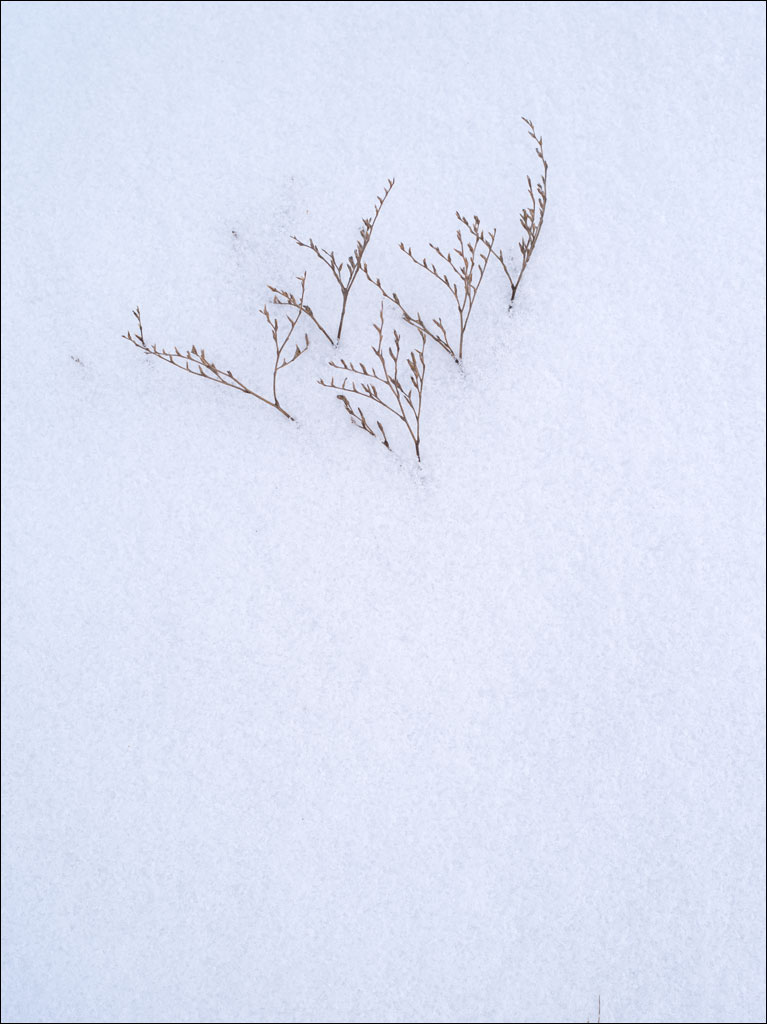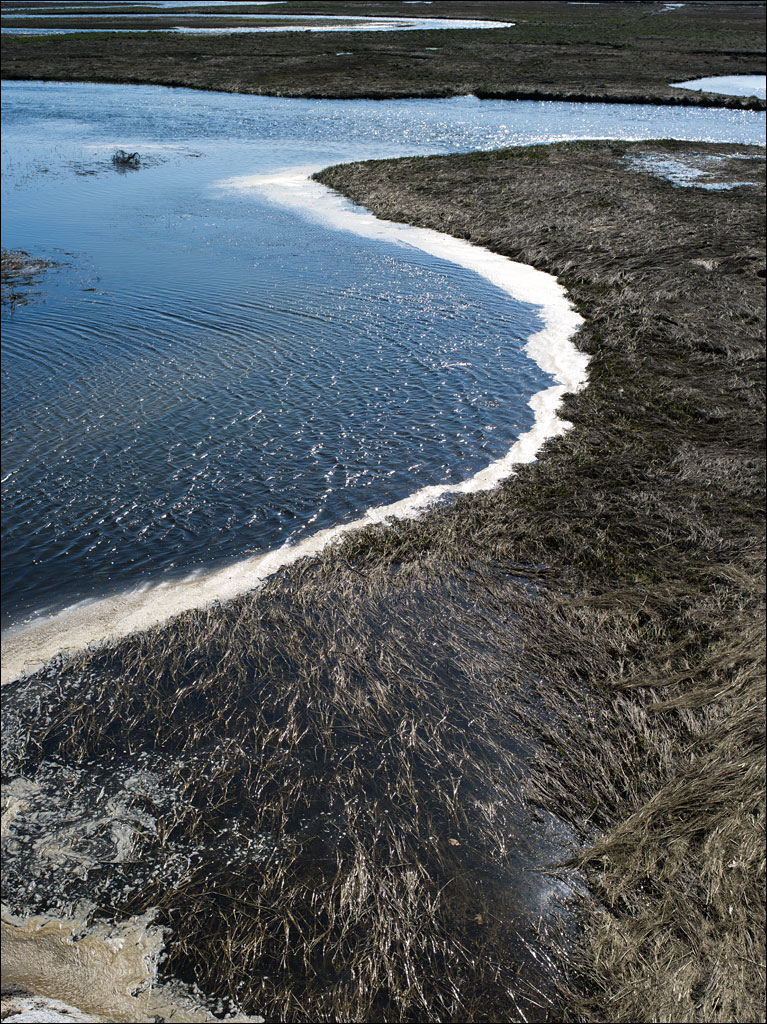 In May, the grass covering a salt marsh is still brown and matted. But the foam bubbling up along the edges of the channels indicates a stirring of life. Click on the image for a larger view.
In May, the grass covering a salt marsh is still brown and matted. But the foam bubbling up along the edges of the channels indicates a stirring of life. Click on the image for a larger view.
Tag Archives: Bates-Morse Mountain Conservation Area
With Spring comes Pollen
Maine Photography Show 2014
 I had the good fortune to have one of my photographs selected for the Maine Photography Show. The show runs from April 12th to May 2nd at the Boothbay Region Arts Foundation gallery in Boothbay Harbor.
I had the good fortune to have one of my photographs selected for the Maine Photography Show. The show runs from April 12th to May 2nd at the Boothbay Region Arts Foundation gallery in Boothbay Harbor.
Old Man’s Beard—Usnea
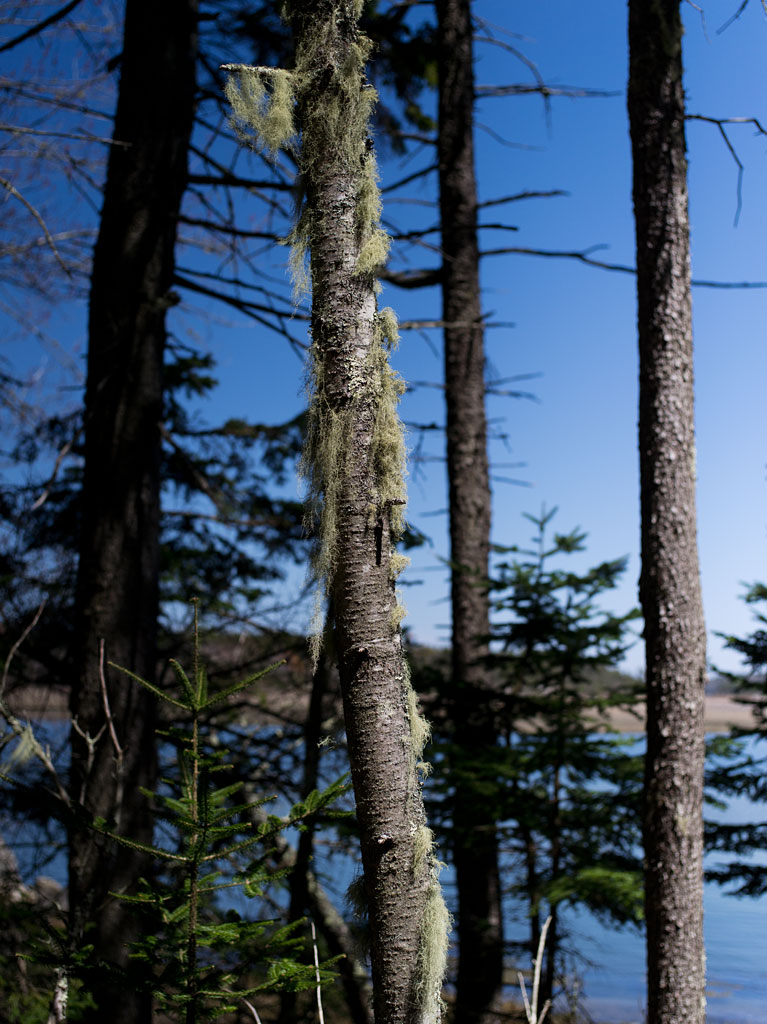 Usnea is a generic name for a rather broad group of lichen in the parmeliaceae family. Hanging from dying or sick trees like green cotton, it is mostly called by the common names of Old Man’s Beard or Beard Lichen. Although usnea indicates the symptoms, it is not the cause of the tree’s condition. Usnea is very sensitive to air pollution, especially sulfur dioxide, which can severely impede its growth.
Usnea is a generic name for a rather broad group of lichen in the parmeliaceae family. Hanging from dying or sick trees like green cotton, it is mostly called by the common names of Old Man’s Beard or Beard Lichen. Although usnea indicates the symptoms, it is not the cause of the tree’s condition. Usnea is very sensitive to air pollution, especially sulfur dioxide, which can severely impede its growth.
Usnea is believed to have antibiotic properties and was used like a sterile gauze for wounds. It is recommended to only use this plant externally. The lichen can also be used to create dyes for textiles, giving yellow, orange, green, blue, or purple hues. Click on the image for a larger view.
Spring Salt Marsh
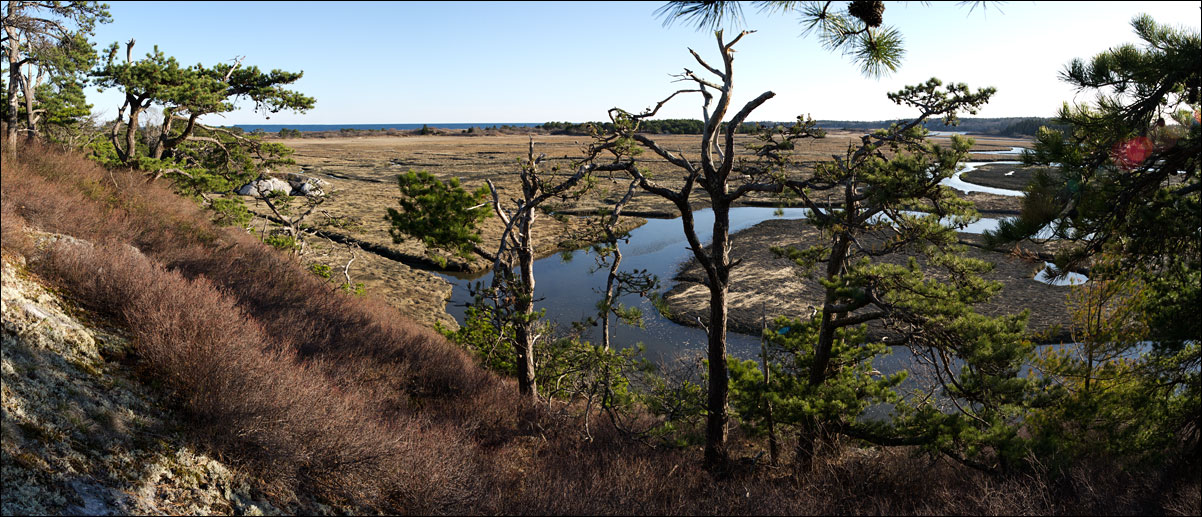 Winter eventually gives way to spring. The snow thaws, signaling the start of what is fondly referred to in Maine as mud season. The salt marsh at Bates-Morse Mountain Conservation Area is a tangle of flattened grass. There is not a burst of growth—the plants don’t seem to trust the threat of snow and frosts have gone, and they are right not to. But the air is scented with the season’s potential. Click on the image for a larger view.
Winter eventually gives way to spring. The snow thaws, signaling the start of what is fondly referred to in Maine as mud season. The salt marsh at Bates-Morse Mountain Conservation Area is a tangle of flattened grass. There is not a burst of growth—the plants don’t seem to trust the threat of snow and frosts have gone, and they are right not to. But the air is scented with the season’s potential. Click on the image for a larger view.
Changing Seasons, Part 2
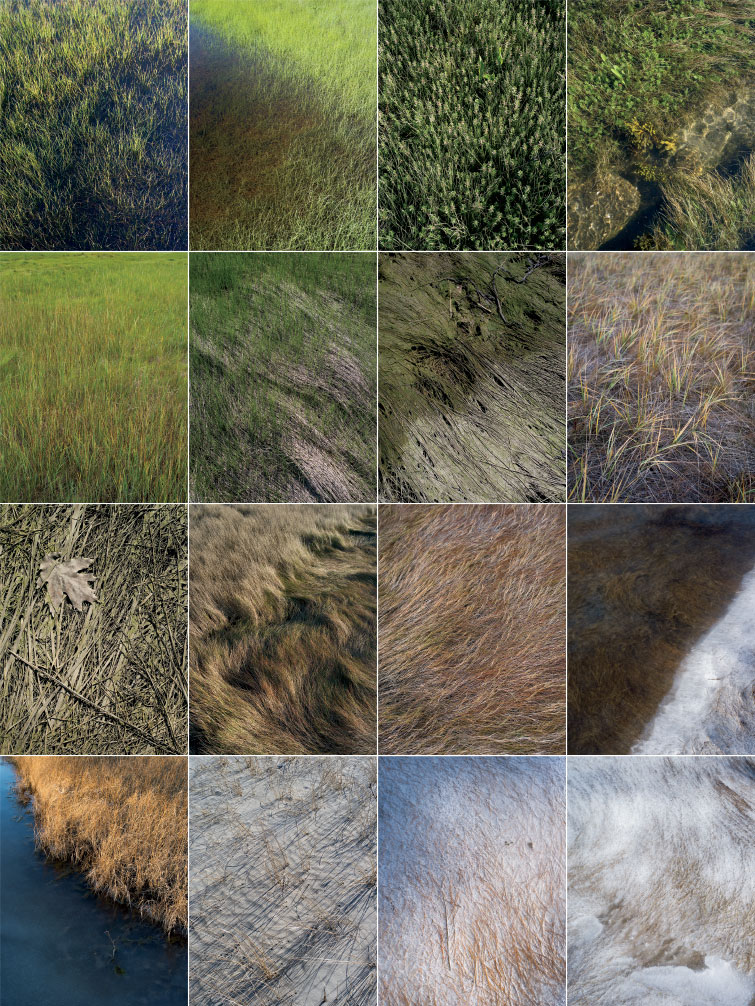 The salt marshes and dunes at Bates Morse Mountain Conservation Area are always in flux. While we like to think of the season as four monolithic blocks clearly delineating their character to the landscape, the year passes over the land with infinitely variability. No two moments are the same. Click on the image for a larger view.
The salt marshes and dunes at Bates Morse Mountain Conservation Area are always in flux. While we like to think of the season as four monolithic blocks clearly delineating their character to the landscape, the year passes over the land with infinitely variability. No two moments are the same. Click on the image for a larger view.
Changing Seasons, Part 1
 Spring just does not simply arrive in Maine; snow and ice don’t simply vanish. Spring comes like a gentle kiss on the land, slowly melting away winter.
Spring just does not simply arrive in Maine; snow and ice don’t simply vanish. Spring comes like a gentle kiss on the land, slowly melting away winter.
This pond in the salt marshes of Bates Morse Mountain Conservation Area is just opening up. In a month or two, fish fry will populate the water. This pool is isolated from the rivers and streams that cut through the marsh, yet the fish population is stable. Amazingly, the salinity of the water is higher than the ocean that feeds the marsh.
Winter Salt Marsh
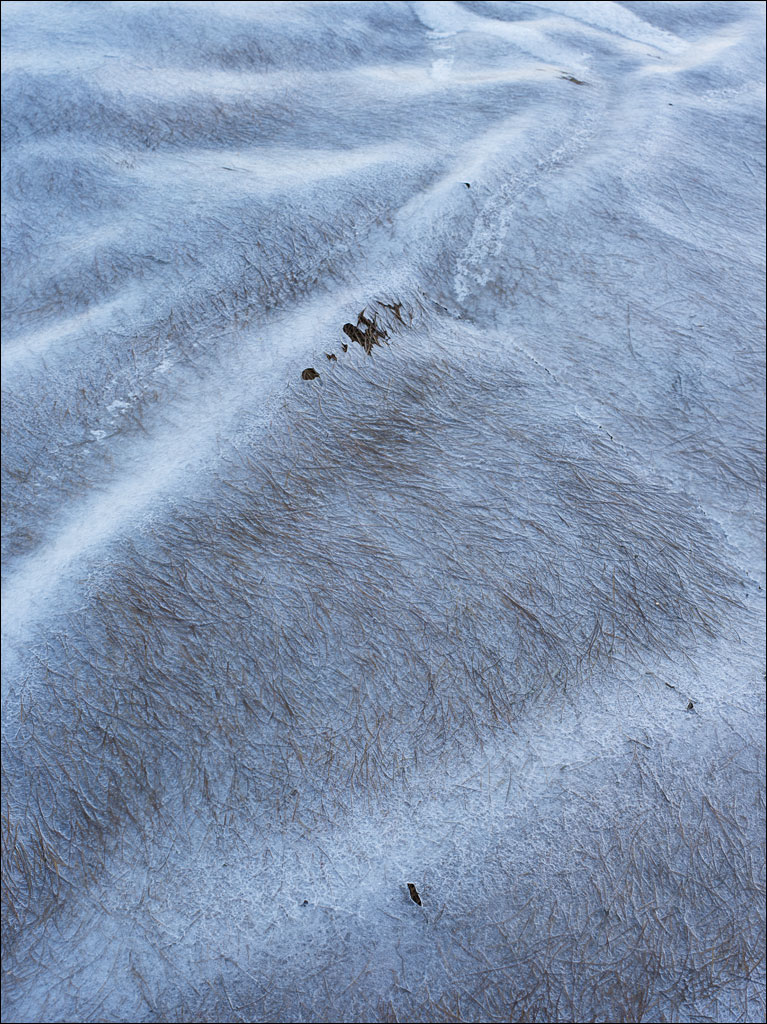 Salt marshes are amazing places. Some of the toughest environments exist right between the land and the sea. Places where extreme changes in salinity, temperatures, and water level can be a daily event. This marsh is on the eastern edge of the Bates-Morse Mountain Conservation Area along the Morse River. Click on the image for a larger view.
Salt marshes are amazing places. Some of the toughest environments exist right between the land and the sea. Places where extreme changes in salinity, temperatures, and water level can be a daily event. This marsh is on the eastern edge of the Bates-Morse Mountain Conservation Area along the Morse River. Click on the image for a larger view.

